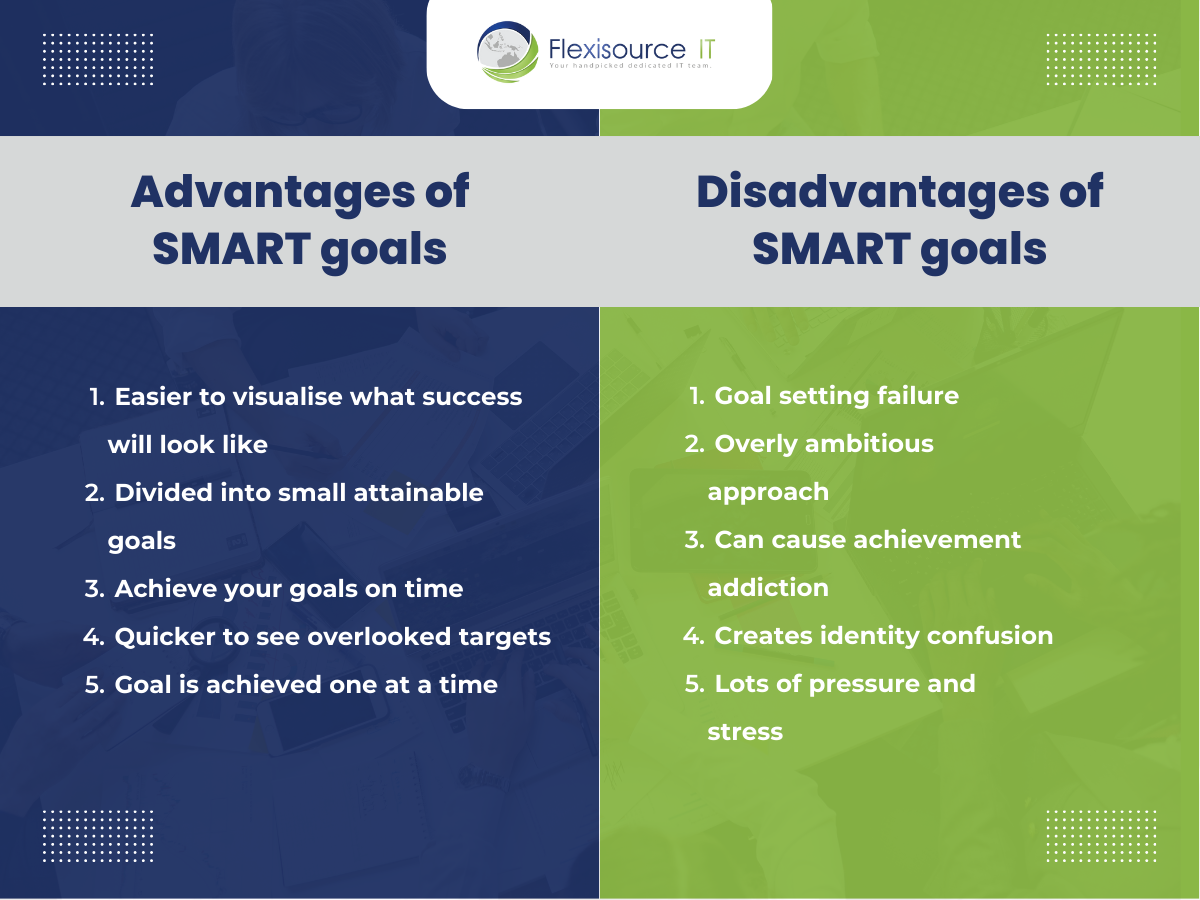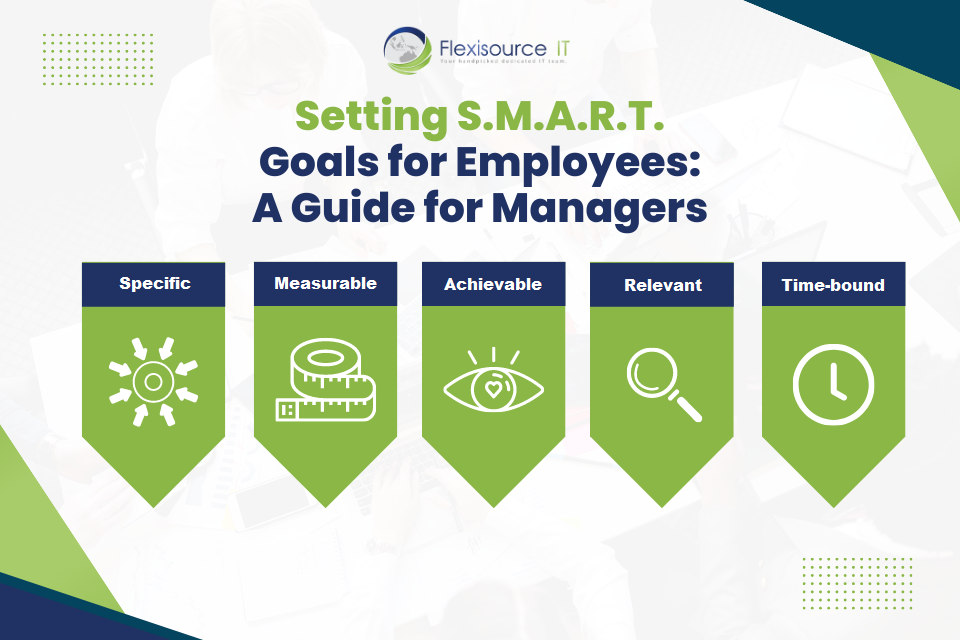If you are a project manager, you are probably familiar with the feeling of frustration when achieving goals for you and your teams. It can be a struggle to reach goals, whether it’s small or large. And before you know it, you give up too soon.
Accomplishing goals can take time and effort. However, managers often forget that achieving goals needs in-depth planning and process. Goal setting is an essential tool for achieving success.
And one most popular tools for this is the SMART goal. This article will tackle various aspects of this framework, including definitions, pros, cons, and tips managers can take when creating their SMART goals.
What are SMART Goals?
Before setting your goalmouths, first, we must understand the definition of SMART goals. Basically, it is a powerful tool used by many successful businesses and individuals to set realistic targets and achieve their desired results.
Through this framework, businesses and employees can ensure that they focus on the right task and reach the desired outcome. Using the SMART framework, you can set more effective and easier-to-achieve goals, as you will have a clear roadmap and metrics to measure your progress.
SMART is an abbreviation for Specific, Measurable, Achievable, Relevant, and Time-bound. Each letter represents an essential aspect of a goal that should be considered to make it more effective.
Here is what each letter of SMART goals stands for:
- Specific. Goals should be clear and precise, so you know exactly what you aim to achieve.
- Measurable. All goals should be measurable, so you can track your progress and determine whether you have achieved it.
- Achievable. Goals should be realistic and attainable within a reasonable timeframe.
- Relevant. You should ensure all goals are pertinent to your objectives and aligned with your values and priorities.
- Time-bound. All goals should have a specific timeframe or deadline for completion, which helps you stay focused and motivated.
What are the benefits and drawbacks of SMART Goals?
SMART goals provide tons of benefits to those who use it. However, like any other goal-setting framework, it comes with some drawbacks. Here are some of them.

Advantages of SMART goals
1. Easier to visualise what success will look like
SMART goals can make it easier for employees to visualise what success will look like in the future. By setting measurable, achievable, realistic, and time-bound goals, employees can gain clarity on their objectives and a clear roadmap for achieving them.
Likewise, this framework allows employees to track their progress and adjust to achieve the primary goal. Not only does this help them stay motivated, but it also helps them become more productive in the workplace.
2.. Divided into small attainable goals
One of the main components of SMART goals is ensuring that all plans are realistic and small. This makes it easier for employees to attain goals. Through this framework, managers can break down their main goals into small ones, providing employees an easier way to progress.
Likewise, this also makes it easier for employees to feel motivated and productive as they will feel successful in their tasks.
3. Achieve your goals on time
By following the SMART framework, employees can create clear and specific achievable goals within a particular timeframe. This makes it easier for them to stay focused, motivated, and on track.
Furthermore, SMART goals help employees stay focused on their goals, making it easier to avoid distractions that can cause delays. The framework also provides a clear deadline, which motivates employees to complete their goals on time.
4. Quicker to see overlooked targets
By using SMART goals, employees can break down complex tasks into smaller, more manageable pieces and then track their progress toward completing those goals. This makes it easier to identify areas where they may fall behind or need additional help to reach their desired outcome.
Additionally, SMART goals can help employees recognise any overlooked targets that may have been neglected or forgotten.
5. Goals are achieved one at a time
By setting specific, measurable, achievable, realistic, and timely goals, individuals can break down their larger objectives into manageable steps that can be achieved individually.
This approach allows for greater focus on the task and increases the likelihood of success. SMART goals also provide a framework to track progress and measure success. This approach makes it easier to identify areas where improvement is needed and adjust accordingly.
Disadvantages of SMART goals
1. Goal setting failure
SMART goals are designed to help employees set achievable goals and stay motivated and focused, which can positively impact their mental well-being. Still, it can also harm people if they fail to meet their targets. It is important to note that unrealistic or unattainable goals can cause stress and anxiety, which may lead to depression.
Therefore, it is crucial to ensure that the goals set using the SMART framework are realistic and achievable within the given timeframe and that employees have the necessary resources and support to achieve them.
2. Overly ambitious approach
Similarly, if not appropriately managed, SMART goals can lead to an overly ambitious approach. When setting SMART goals, it is crucial to ensure the objectives are realistic and achievable within the given timeframe.
Otherwise, managers and employees may become too ambitious in setting their goals, leading to unrealistic expectations and disappointment when the desired results cannot be achieved. This could hinder progress.
3. Can cause achievement addiction
SMART goals are a great way to set and track progress toward achieving a goal. However, when misused, they can become an addiction, leading to a vicious cycle of constantly striving for more without feeling satisfied. This can cause burnout and lead to inadequacy when goals are unmet.
This is why it is essential to use SMART goals in a balanced way. Setting achievable goals and celebrating successes will help you stay motivated and focused on your long-term objectives without getting caught up in the need for constant achievement.
4. Creates identity confusion
SMART goals can be an excellent tool for organisations to set measurable objectives and track progress. However, when it comes to employees, these goals can create identity confusion and lead to feelings of burnout.
SMART goals are often used as a one-size-fits-all approach that does not consider individual strengths and weaknesses. This can cause employees to feel like they are not being valued or appreciated for their unique skillset, leading to decreased motivation and productivity.
Furthermore, this goal setting framework can also lead to an unhealthy work environment where employees constantly compete against each other to meet the same goal. This type of competition can create an atmosphere of stress and anxiety which is not conducive to creativity, productivity, and employee camaraderie.
5. Lots of pressure and stress
SMART goals are a popular way of setting objectives, but they can also create a lot of pressure and stress. When we set goals that are too ambitious or unrealistic, it can be challenging to reach them, leading to feelings of disappointment and failure. This can have a negative effect on our mental health and well-being, as well as our motivation to keep striving for success.
How to create SMART goals for your employees?
There are tons of SMART goals templates online that managers can use. However, this should not be used as it is. It needs to be customised and personalised for each individual employee.
When setting SMART goals, managers must focus on the right goals. It should be specific enough so that you know exactly what needs to be done to reach it. Likewise, goals should also be measurable to track your progress towards the goal. Additionally, it must be achievable to ensure that it is realistic and relevant to remain meaningful.

1. Make all goals more specific
Setting SMART goals for employees is integral to a manager’s job. It helps to ensure that employees are focused on the right tasks and motivated to achieve their goals.
However, for these goals to be practical, managers must ensure they are specific. Specificity is critical when it comes to SMART goal setting. Managers can ensure that employees clearly understand what is expected of them and what they need to do to reach their goals.
For example, instead of setting a general goal like “I want to improve my writing skills,” you could put a SMART plan like I want to improve my writing skills in business emails.
2. Ensure that all goals are measurable and achievable
As mentioned earlier, SMART goals are an excellent way for managers to measure an employee’s success or track their progress. As such, when setting SMART goals, all goals must be measurable and achievable. For example, instead of setting a goal like “I want to increase my writing turn over time,” you should aim a SMART goal like I will measure my progress by tracking the length of my turnover time for a 1,000-word article and decrease it by 5 minutes on each paper.
3. Guarantee that all goals are relevant
SMART goals are an effective tool for managers to set and achieve their desired objectives. However, these goals must be relevant and aligned with the organisation’s mission.
As such, managers must ensure that all goals are realistic, measurable, achievable, relevant, and time-bound when setting SMART goals. This will help motivate employees to work towards achieving the set objectives in a timely manner and improve performance.
4. Create a schedule
Setting SMART goals can be a great way to stay on track and achieve your objectives. However, in order for this to be effective, it is crucial to have a schedule in place.
Schedules help you break down your goals into achievable chunks and make sure that you are taking the right steps toward achieving them. They also provide a timeline so that you can track your progress and adjust accordingly if needed.
5. Continually review and align your goals
SMART goals make it easier for managers to monitor employee performance and ensure everyone is working towards the same objectives. However, the same SMART goals should not be in place forever. Regularly reviewing and aligning SMART goals is vital to ensure they remain relevant and achievable.
Over time, circumstances can change, affecting the ability to achieve the goal. In addition, new information or insights may come to light that can affect the goal.
As such, regular reviews can help identify these changes and adjust the goal accordingly. In addition, it can help track progress toward the goal and identify any areas where improvements are needed.
To ensure that SMART goals remain relevant and achievable, they should be reviewed regularly, typically monthly or quarterly. This allows employees to make adjustments and course corrections as needed, which can help ensure that they achieve their goals within the given timeframe.
Conclusion
In conclusion, setting SMART goals for employees is a powerful tool for managers to help their team members achieve their objectives and improve their performance. Managers can help employees set specific, measurable, achievable, relevant, and time-bound goals through the SMART framework. This approach helps to clarify expectations, motivate employees, and provide a roadmap for success.
Like how Flexisource Its project managers lead each team throughout the project. Here, we ensure the goals are realistic and achievable and regularly review and align them to account for changing circumstances.









